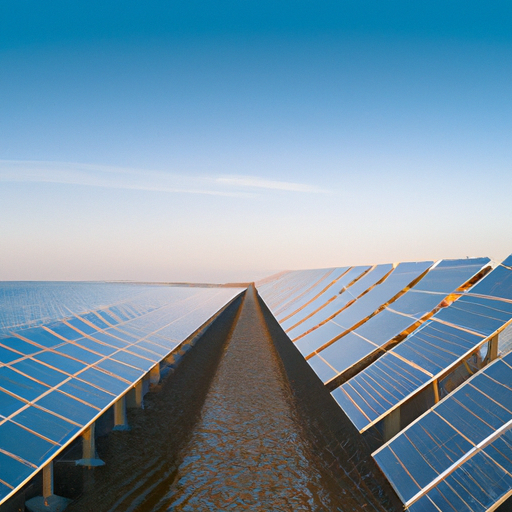Investors are increasingly turning their attention to the floating solar industry, which offers the opportunity to install solar panels on human-made reservoirs instead of using land for solar development. To further boost efficiency, tracking technology has been introduced, allowing floating panels to maximize their output by following the sun throughout the day.
Tracking is a common feature in land-based solar arrays, where panels equipped with a tracker adjust their position to capture sunlight from the most efficient angles. While tracker-equipped panels are more expensive to install and maintain, they improve solar conversion efficiency and enable arrays to generate more electricity in less space.
The Benefits and Challenges of Tracking Technology
The National Renewable Energy Laboratory (NREL) reported a global average improvement of 9% in solar energy conversion for panels mounted on a single tracking axis. However, the adoption of tracking technology in the United States is not as widespread. The US Energy Information Agency (EIA) attributes this to the presence of cloud cover, as tracking technology is less effective at capturing diffuse radiation.
Despite this, the global solar tracker market is projected to grow to $19.61 billion by 2030, according to Fortune Business Insights. The ability of floating solar to utilize existing reservoirs and human-built water infrastructure makes it an attractive option, especially in regions where land availability is limited or opposed.
Overcoming Challenges with Floating Solar
Implementing floating solar arrays comes with its own set of challenges. Corrosion, fluctuating water levels, and the impact on recreational activities are potential complications. However, engineers have been developing solutions to address these issues.
One such solution is the use of tracking technology in floating solar systems. SolarisFloat, a Portuguese firm, has installed a floating solar array with tracking on a lake in the Netherlands. This circular system, despite its small capacity, demonstrates the potential for improved energy production.
Xfloat: Revolutionizing Floating Solar with HSAT Technology
Israeli start-up Xfloat has developed a horizontal single-axis tracking system (HSAT) specifically designed for floating solar arrays. By leveraging machine learning and precision tracking, Xfloat aims to improve efficiency and reduce costs.
The HSAT configuration offers advantages such as reduced project costs and increased site selection options. Xfloat’s hydrostatic system utilizes controlled buoyancy tanks, eliminating the need for complex mechanical components and allowing panels to be tilted within a range of +/- 60 degrees.
Xfloat’s technology has already attracted attention from Spanish water utility stakeholder Miya Water, which acquired a minority stake in the company to enhance its business model.
The Outlook for Floating Solar with Tracking Technology
The potential for floating solar arrays with tracking technology is significant, although challenges remain. While the US market has been slower to adopt tracking technology, ongoing research and development efforts offer promising solutions.
With advancements in technology, the floating solar industry is poised for growth, offering a sustainable and efficient way to generate renewable energy without compromising limited land resources.
























